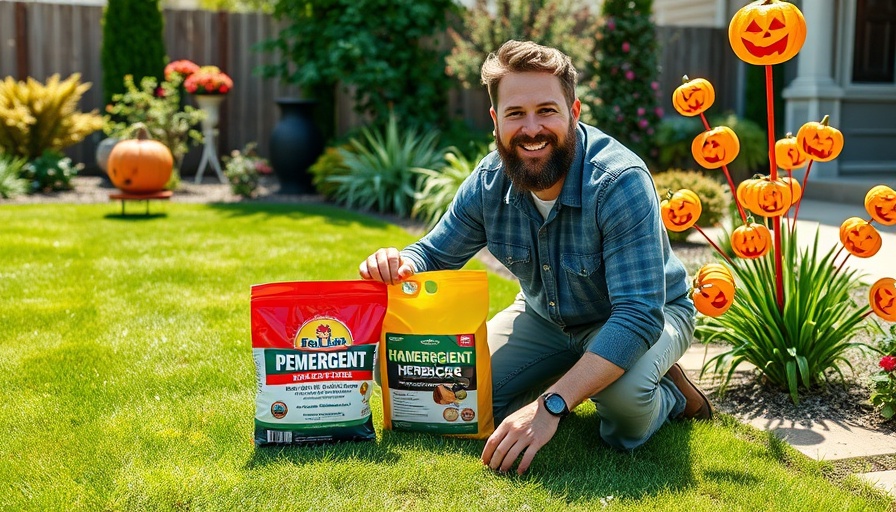
Unlocking the Secrets: Planting Conifer Evergreen Trees Made Easy
Planting conifer evergreen trees can transform your garden into a stunning green sanctuary year-round. In the recent video, How to Plant CONIFER EVERGREEN Trees - Balled & Burlap (B&B) - Pines, Arborvitae, Spruce, Firs, we journey through the essential steps of planting these majestic trees. Understanding the right techniques not only enhances the visual appeal of your home but also ensures the longevity of your investment.
In the video How to Plant CONIFER EVERGREEN Trees - Balled & Burlap (B&B) - Pines, Arborvitae, Spruce, Firs, we explore essential planting techniques that are crucial for the successful establishment of conifers in your garden.
Understanding Balled & Burlap (B&B) Trees
Balled and burlap conifers, often seen in nurseries, come with a protective covering that helps secure their roots during transplant. These trees require specific care to thrive post-planting, starting from proper installation. When you purchase one, it’s vital to evaluate its shape and root condition before bringing it home, ensuring healthier growth and development.
The Art of Selecting the Right Tree
Choosing the right type of conifer for your garden is crucial. You want your selected conifer to be appropriate for the location and soil type. The video highlighted an example of a 6-foot tall Cammy Cyprus, planted strategically to fill visual gaps in the landscape. Planting trees that will grow to the desired height and width in their respective locations can minimize future issues, such as overcrowding or stunted growth.
Tips for Preparing Your Planting Site
Preparation is essential. Before planting, remove any grass or weeds from the area where your tree will be placed. This ensures that your conifer faces no competition for nutrients or water. The recommended approach is to create a planting hole approximately twice the width of the root ball but without over-digging, which can lead to a weak root structure. Loosening surrounding soil around the hole maximizes root accessibility.
Soil: The Foundation of a Healthy Tree
The soil where your conifer is planted plays a critical role in its overall health. It’s generally advised not to amend the soil when planting conifers. This practice helps the roots adapt to the native conditions, promoting consistent and vigorous growth. In the discussed video, the importance of a native soil, especially in locations like North Carolina, is emphasized to avoid issues like water pooling and root confinement.
The Planting Process: Essential Steps
After selecting your tree and preparing your site, the planting process begins. It’s imperative to position the tree so that the root flare sits just above the soil to ensure proper moisture intake. The tree should be secured in the hole before backfilling with excavated soil. This technique not only stabilizes the tree but also ensures that no air pockets remain, which can dry out roots. Finally, watering your newly planted evergreen is essential. It helps settle the soil and establish strong root contact, promoting longevity.
Long-Term Care for Conifers
Once planted, knowing how to care for your conifer is essential. Adding a layer of mulch can prevent weeds while retaining moisture. Consistent watering, particularly during dry spells, is vital for ensuring that your conifer stays healthy. It's also a good idea to periodically inspect your tree for any signs of root distress or pest infestations. Regular monitoring allows for timely interventions that can preserve the beauty and health of your landscape.
Local Landscaping Insights for North Carolina Residents
For homeowners and DIY enthusiasts, there are plenty of opportunities to enhance your landscape. Local contractors in areas like Charlotte provide exceptional landscaping services, ensuring your new conifer fits seamlessly into the design. Additionally, low maintenance landscaping ideas, including xeriscaping and pollinator-friendly designs, can be integrated with your conifer plantings, making your garden an inviting oasis for wildlife and reducing upkeep efforts.
With the knowledge shared in the video and further research, you can confidently embark on your journey to planting conifer evergreens. It's not just about beautifying your landscape; it's about creating an enduring legacy of nature for future generations to enjoy.
 Add Row
Add Row  Add
Add 




Write A Comment